Types of boats
Sailing is open to everyone. Regardless of age or ability, it’s a level playing field out on the water and the opportunities to get involved are ever evolving. Find out about some of the boats involved.
Across the Sailability network you’ll find everything from adventure and adrenaline on the high seas, to peace and tranquillity on the canals. There are sea venues but also a plethora of inland lakes and reservoirs. There are fast boats and slower, more stable ones. There are groups that focus on the thrill of competition and others wanting to relax and enjoy nature up close. From disabled children wanting to learn to sail, to adults getting back on their feet and of course, those that don’t want to stop doing something they love just because of health or old age – there’s a Sailability group for everyone.
“Disabled people are able to enjoy time on-the-water in many, varied types of boat, not just those that have been adapted. From tall ships to narrow boats, to dinghies and keelboats, and from windsurfers to powerboats - you name it, disabled people are out there sailing it!”
There are people cruising on their yachts, racing their Optimist or Laser and exploring the inland waterways without any adaptations. But for some, getting the right kit can make all the difference to their independence and inclusion. It’s all about finding ways to get on and off the boat, getting into the right position within the boat, and then having the support to control the sails and steer.”
Here, we take a closer look at some of the boats and opportunities you’ll commonly see at Sailability sites across the UK.
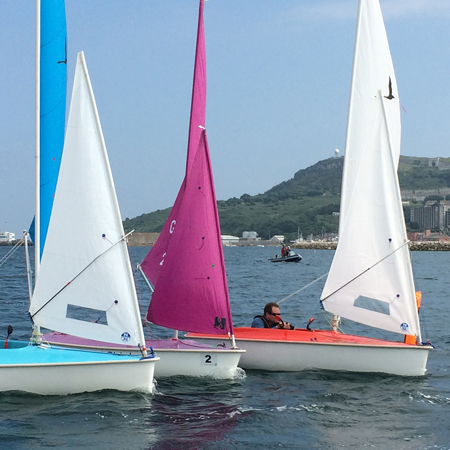
Small boats
You will find a variety of small and responsive boats, featuring a heavy centreboard or lifting keel that provides extra stability for people who may lack the mobility to move around the boat easily. The often simple set up makes it easy for beginners to learn to sail, but they’re also great for racing and many offer high performance for even the most competitive of sailors. Single-handed or double-handed, they can be sailed by both disabled and non-disabled sailors. Examples: Hansa 2.3 and 303, Liberty.
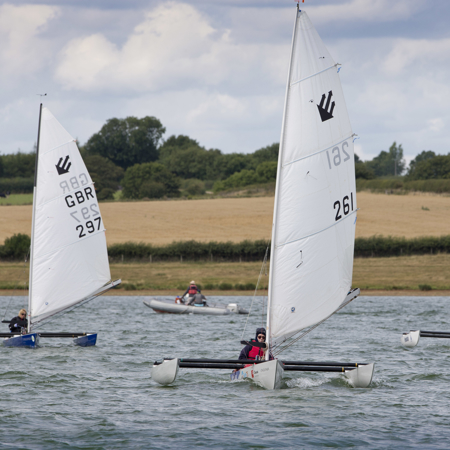
Multihulls
Twin or three hulled small boats, with forward-facing seats and adapted steering. They are stable, fun to sail, offer excellent performance and can be used in regular club racing. Examples: Challenger, Windrider, Weta.
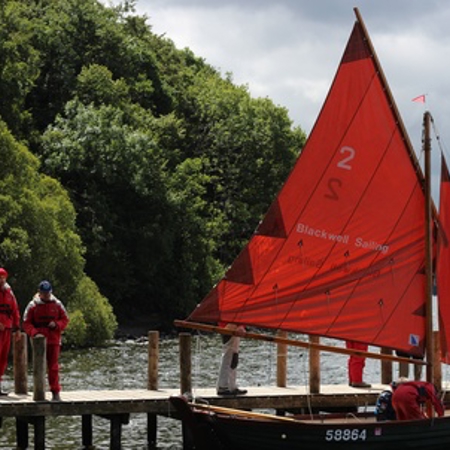
Day boats
Day boats offer stability and plenty of space. Suitable for both cruising and racing, small adaptations to meet individual needs are commonly seen. They are fun and sociable to sail, with room for multiple crew members – perfect for going further afield. Examples: Traditional longboats, Luggers.
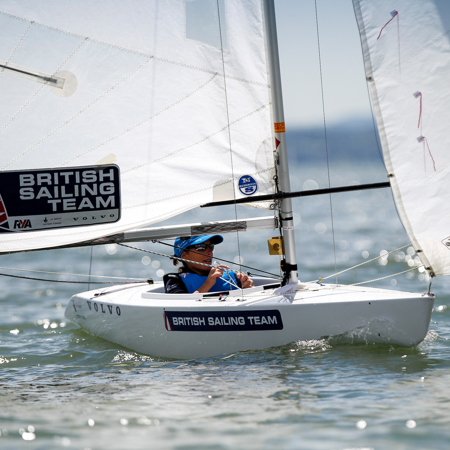
Keelboats
With even greater stability provided by a keel, these boats can be sailed single-handed or by several crew. Some are a great way to get into racing – with a Paralympic pedigree – but others are more suitable for cruising around. Adaptations are possible to improve both access to the boat and control once on board. They can be crewed by disabled and non-disabled sailors alike. Examples: 2.4mR, Sonar, Elliot 6, SB20, SKUD, RS Venture, Martin, , Hawk 20.
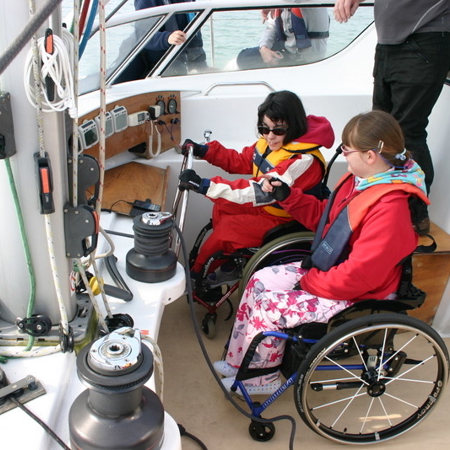
Yachts and tall ships
Bigger and really stable because of a keel, yachts and tall ships require team work to get where you want to go whether it’s a day trip around the coast, or an ocean crossing. A very few have been adapted so you can stay in your wheelchair, and others will have aids to make it easier to get around Examples: Ellen MacArthur Cancer Trust, Tall Ships Trust, Oceans Youth Trust (South); Rona Sailing project; Sailboat project; Spirit of Scott Bader and Verity K via the Gwennili Trust
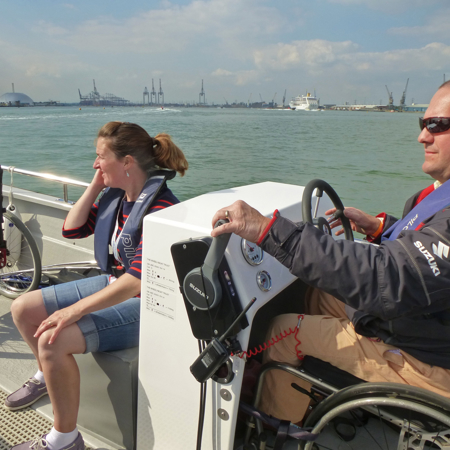
Powerboats
An alternative to sailing, accessible powerboats mean you can stay in your wheelchair once in the boat. Get aboard straight from a pontoon or slipway with side access or a drop bow. Examples: Wheelyboats, Wet Wheels, Pioneer.
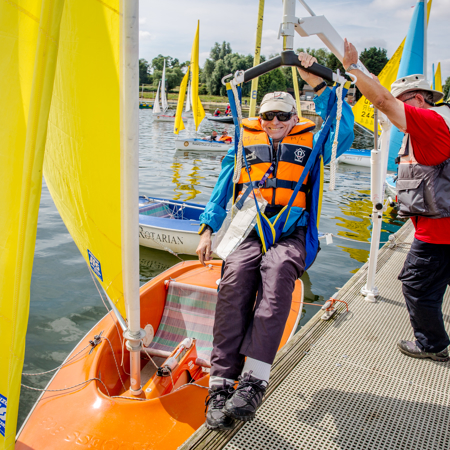
Easy access
From transfer boards, to stacking steps and hoists, there are a variety of solutions that enable almost anyone to get in and out of a boat. Once on board, seats can be adapted to ensure the sailor is comfortable and able to actively participate. From low tech beanbags to foam padding and specially fitted seats – there are numerous options and possible adaptations.
In control
The wide variety of innovative solutions and technologies to give sailors independence on-the-water is constantly evolving. Whether it’s aiding strength and mobility to steer or trim the sails, or accessible navigation tools, almost anything is possible. Electric servos, joy sticks, chin switches, sip and puff straws and even eye gaze are all used to give sailors control of their boat. Tactile maps, audible racing marks, apps and various other tools are also all available to be used alongside navigation aids.
“With advancing technology, we are seeing more and more innovative solutions to enable those with even the most restricted mobility gain independence and enjoy everything Sailability has to offer.
“But of course, sailing is about so much more than just the boats. The benefits of being on the water are huge with regular participants increasing physical activity, learning new skills, connecting with others and improving well-being.
The first step is an open dialogue around the support you need and what is important to you, and asking questions about what you can expect in return.
